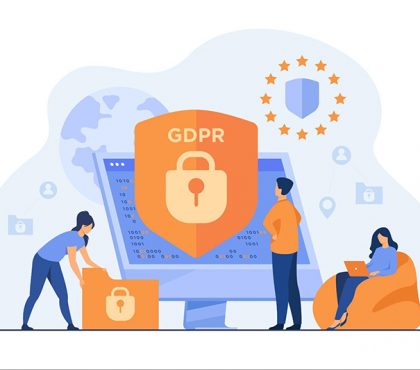As a Digital Training Manager, you are surely working your best for the remote employee training system. But, even it’s your JD, you may be struggling with creative learning solutions and results management. Especially when some bad signs of current training strategy come, the already good gone bad and you don’t know what you don’t know.
Here are some remote training tips on how to deal with the most common issues faced in remote employee training.
- 3 main challenges when training employee remotely
- 8 best practices to leverage your remote employee training
- #Best Practice 1: Get your employee ready for the remote training transformation
- #Best Practice 2: For the old course: classify the good and bad
- #Best Practice 3: Make training fun
- #Best Practice 4: Make your course interactive
- #Best Practice 5: Include real-life examples and situations
- #Best Practice 6: Make your online training mobile-friendly
- #Best Practice 7: Don’t forget the employee’s mental health and emotion
- #Best Practice 8: Listen to your employees' feedback
- Save your energy for important tasks, go partnering!
3 main challenges when training employee remotely
- Lack of employee engagement and attention, compared to in-person training class
- Online learning environment may hurt employee learning experience
- Completion rate and employee’s productive may be negatively impacted.
8 best practices to leverage your remote employee training
There are many creative ideas for virtual employee engagement. Below are the most common and effective ones:
- Get your employee ready for the remote training transformation
- For the old course: Classify the good and bad
- Make remote training fun
- Make remote training interactive
- Include real-life examples and situations
- Make you online training mobile-friendly
- Don’t forget employees’ mental health and emotion
- Listen to your employees’ feedback
#Best Practice 1: Get your employee ready for the remote training transformation
Among the remote training tips, this is the most vital. Employees, including you, need time to accept changes. Since remote employee training helps your employee adapt to the remote working environment and ensure their productivity, the sooner the employee gets ready for changes, the better result you’ll get.
Make an announcement to employees. We all agree that. But the important thing here is how you announce. Rather than keeping them waiting passively, it would be better to create a positive and worth-to-expect vibe in your announcement.
Below is the online training course introduction from Integrity & Value (I&V). Why is this considered one of the best practices for remote training? Since the leadership course is hard-to-follow online, F.Learning adds fun vibes to the introduction video. The fun characters and energetic voice-over are to up employees’ moods. Most of the feedback we receive is about how excited employees are waiting for the course.
Preparation Checklist to Power your Digital Transformation
Wondering if you miss anything in your preparation to digitize your training? This is just what you need.
#Best Practice 2: For the old course: classify the good and bad
“Can you keep this thing in the new courses?”. We receive a lot of these requests from Digital Learning Managers. And they are right! Improve the online training experience doesn’t mean breaking the old because there are both good and bad things in old training courses. You can’t push employees into a completely strange online training environment and ask them for a quick improvement. Everything needs time to get used to.
List down elements that employees love most from old courses. It can be a mascot, the colour of the organization’s branding guideline, or a trainer. Then partner with F.Learning in order to integrate them into the new online training method.
Here is one of the 330 online courses we made for Permaculture. Learners love Geoff Lawton so we come up with this remote training idea to keep him throughout the online course series. All we need is to animate some training content to engage more learners.
#Best Practice 3: Make training fun
Most of the Digital Training Managers we’ve worked with agree that fun benefits learner engagement. “Green screen, slide show don’t satisfy our employees” – One client said this to us. But in the online training environment, how to make it fun? Well, you have plenty.
The fun comes from the way you write training content and the way you visualize knowledge. The current training materials are an idea inventory to create fun vibes for your online training course. You can see the below example, one of the best practices for remote training.
When working with Simple Nursing, the training content is informative and helpful, but it’s a little bit serious. Then, F.Learning uses animation to create fun vibes. We create fun characters, colourful illustrations, and an energetic voice-over to expresses knowledge in a friendly and easy-to-digest way.
So, here is the remote training tips when adding fun elements:
- Use insider jokes: collect things that make your employee laugh and ultilize them for remote employee training.
- Use visual elements: visual is a huge source of funny, you can create funny characters to make the course more energetic.
#Best Practice 4: Make your course interactive
When working with Digital Learning Managers, we realize that one of the reasons for a bad online learning experience is the lack of interactive elements. This makes the course boring. Then, your remote employee training becomes one-sided training. Thus, the most useful training tip is adding some interactive elements (quiz, flip card, etc) not only to keep employees stay focus but also to track staff’s performance.
Interactive remote training ideas come in many forms, either quiz, branching scenarios or gamification. To give you a clearer view of how to adding interactive elements into your training, here is F.Learning’s animated video demo for interactive online training that using quizzes.
Recommend reading:
#Best Practice 5: Include real-life examples and situations
One of the easiest and widely applied remote training tips is to include sections of real-life scenarios and events. Why then?
1. Because they provide a break from theories
Learning is often about theories. It’s so abstract and sometimes difficult to grasp. So, to demonstrate theoretical knowledge’s usefulness in everyday life, give real-life examples and scenarios. Once the knowledge is useful, learners will want to note it down!
2. Because relatable information is easy to remember
People will remember things better when they can connect them to other things they already know. In other words, real-life contexts make theories more relatable and so more memorable. This is how learners might even pull out the information without even knowing it.
3. Real-life situations could help kick off critical thinking!
Here you can make use of the micro-learning method! For example, create small thought exercises that require learners to think critically about certain real-life situations and suggest suitable solutions. It’s useful because it’s a way to give knowledge a meaningful context and so motivate learners to pick up on it.
Remote Training Tips on how to present examples and scenarios in interesting ways
There are various ways to present and deliver these examples to your learners. You can use videos, infographics or news clips/recordings to spice things up. Many people find visual aids and animations more refreshing and engaging in learning processes!
#Best Practice 6: Make your online training mobile-friendly
The most challenging part of remote employee training is how to leverage the skills without hurting staff’s productivity. So, why don’t you make it more accessible for employees to learn anytime? Not any employee always keeps the laptop by their sides. Moreover, 82% of employees completed the online training programs outside of their working hours. A mobile-friendly online training program saves your employees time without breaking their working schedule.
NOTE: To make your online training mobile-friendly, you need to choose the LMS platform carefully
Below is one of F.Learning’s projects – Intelycare. Since the job requires their staff (medical professionals) to travel between medical organizations, we go for the remote training idea of creating the mobile version so that they can learn on the way.
#Best Practice 7: Don’t forget the employee’s mental health and emotion
Remote employee training programs should include not only knowledge but also employee’s emotion and mental health. Like you, employees suffer from stress, burnout, disengagement, etc while doing their own tasks. Thus, it would be better to add health training courses to allow your employee to stay productive.
Below is one of F.Learning’s off-the-shelf courses to help employees get over anxiety during the COVID-19 pandemic.
#Best Practice 8: Listen to your employees’ feedback
At the end of the day, you are a Digital Learning Manager and all you want is to improve training quality. Besides all the remote training tips above, let’s get back to the essence. The best way to improve further remote employee training is to collect employee’s feedback. This step gives you a lot of ideas about what’s good and what’s bad in the courses. Figure out problems, test new things, collect employee feedback, then replay the process over and over. That’s the core solution for a better online training experience.
Save your energy for important tasks, go partnering!
It’s not hard to apply the above tips, but it takes time. When improving the online training experience, you’re still busy with other tasks. These are tasks that only you can handle. Thus, rather than leaving yourself stressed, leave the online learning experience task to us. Partner with F.Learning so you can focus on more important tasks, without hurting your employee’s learning experience.
Read more:
- 4 Ways to Use Animation to Improve Online Training Experience
- Animated Training Videos: 11 Brilliant Examples to Inspire You
- How to remain brand compliance in employee training programs

Sean Bui, the founder and creative director of F.Learning Studio, is a respected leader in the e-learning and multimedia production industry. With over 10 years of experience, he has dedicated his career to helping organizations create engaging and impactful learning experiences.
Under his leadership, F.Learning Studio has grown into a trusted partner for organizations in the education, healthcare, and corporate training sectors, producing over 2,000 minutes of educational animation.





